Text

When I was a kid, I desperately wanted to be an archeologist and adventurer discovering lost ruins across the world. I also wanted to be a librarian, a police officer, a writer. The list was inspired by the books I was reading and the television I was consuming at the time, changing almost every other day as I acquired new information.
What’s striking when reading ‘Bad Blood’ is that when Elizabeth Holmes was asked the question about what she wanted to be when she grew up, the answer was not about a particular field or job role. She wanted to be a billionaire. The term doesn’t describe much about what a person with this status would do day-to-day but when we think about the term there are a few obvious names that come to mind.
Inspired by Steve Jobs, Elizabeth set out to change the world with an idea that would revolutionize the medical field.
Theranos was the next Silicon Valley “Unicorn” - experiencing a meteoric rise gaining attention and investments from the rich and powerful. Everything was in place for Elizabeth Holmes to realize her dream of becoming a billionaire, the only problem? The technology didn’t work.
‘Bad Blood’ is the triumph of investigative journalism – it was John Carreyrou’s articles in the Wall Street Journal that exposed the fraudulent claims made by Elizbeth Holmes and Theranos. This book is fast paced and breathtaking, after each chapter you will find yourself asking why no one had caught on as the years went by.
Even though the heart of the book is one case, the story points to a much bigger issue with attitudes and investment within Silicon Valley. In an attempt to chase the next gold rush from new technology corners were and due diligence forgotten while real patients were put at risk.
As a side note, I’d also highly recommend ‘The Smartest Guys in the Room’ by Bethany McLean and Peter Elkind if you enjoy reading about corporate fraud!
2 notes
·
View notes
Text

When I was a kid, I desperately wanted to be an archeologist and adventurer discovering lost ruins across the world. I also wanted to be a librarian, a police officer, a writer. The list was inspired by the books I was reading and the television I was consuming at the time, changing almost every other day as I acquired new information.
What’s striking when reading ‘Bad Blood’ is that when Elizabeth Holmes was asked the question about what she wanted to be when she grew up, the answer was not about a particular field or job role. She wanted to be a billionaire. The term doesn’t describe much about what a person with this status would do day-to-day but when we think about the term there are a few obvious names that come to mind.
Inspired by Steve Jobs, Elizabeth set out to change the world with an idea that would revolutionize the medical field.
Theranos was the next Silicon Valley “Unicorn” - experiencing a meteoric rise gaining attention and investments from the rich and powerful. Everything was in place for Elizabeth Holmes to realize her dream of becoming a billionaire, the only problem? The technology didn’t work.
‘Bad Blood’ is the triumph of investigative journalism – it was John Carreyrou’s articles in the Wall Street Journal that exposed the fraudulent claims made by Elizbeth Holmes and Theranos. This book is fast paced and breathtaking, after each chapter you will find yourself asking why no one had caught on as the years went by.
Even though the heart of the book is one case, the story points to a much bigger issue with attitudes and investment within Silicon Valley. In an attempt to chase the next gold rush from new technology corners were and due diligence forgotten while real patients were put at risk.
As a side note, I’d also highly recommend ‘The Smartest Guys in the Room’ by Bethany McLean and Peter Elkind if you enjoy reading about corporate fraud!
2 notes
·
View notes
Text
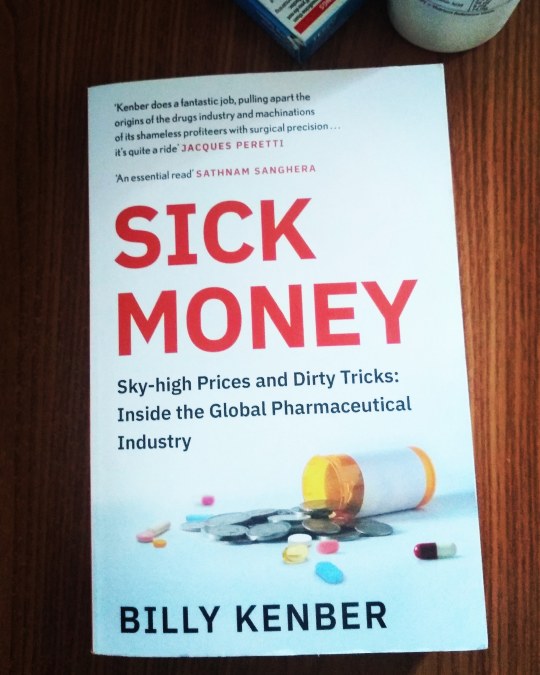
The financialization of the pharmaceutical industry demonstrates exactly what happens when you take social responsibility out of the equation. Reading this book reminded me of the Kai Ryssdal quote I often hear on the Marketplace podcast - ‘capitalism doesn’t care if you live or die’. The cost of viewing medications as a commodity is human lives; it's the stories of people rationing insulin or waiting on a lottery ticket for treatment.
In 'Sick Money' Billy Kember outlines the rise and fall of disruptor companies such as Concordia which completely changed the pharmaceutical landscape. Instead of developing new drugs they sought to create profit through radical increases in prices of existing treatments. Kember outlines how the shift to constantly seeking ‘shareholder value’ has corrupted the unspoken social contract the industry was built on up until the 1980s.
The book also explores the impact of a noticeable slowdown and narrowing in R&D which can also be closely linked to the focus on cost incentives. Research is increasingly concentrated on rare diseases and cancer treatments offering only small incremental improvements to treatments as companies race to file patents. Prices of new drugs are kept artificially high as they build on the dramatic hikes that have already taken place.
Kember argues the importance of increased transparency, price caps and updates to patent law in order to prevent treatments from becoming unattainable on a global scale. Even though the US market functions differently to other countries it creates a benchmark. European healthcare systems have struggled to keep up with the rising costs, while poorer countries are forced to rely on aid.
‘Sick Money’ is incredibly well researched and engaging, it incorporates stories from real patients amongst all the technicalities as a reminder of what’s at stake. The final chapters outline how individuals, organisations and governments are fighting back. There is a sliver of hope before a final conclusion that we must act now before it’s too late.
1 note
·
View note
Text
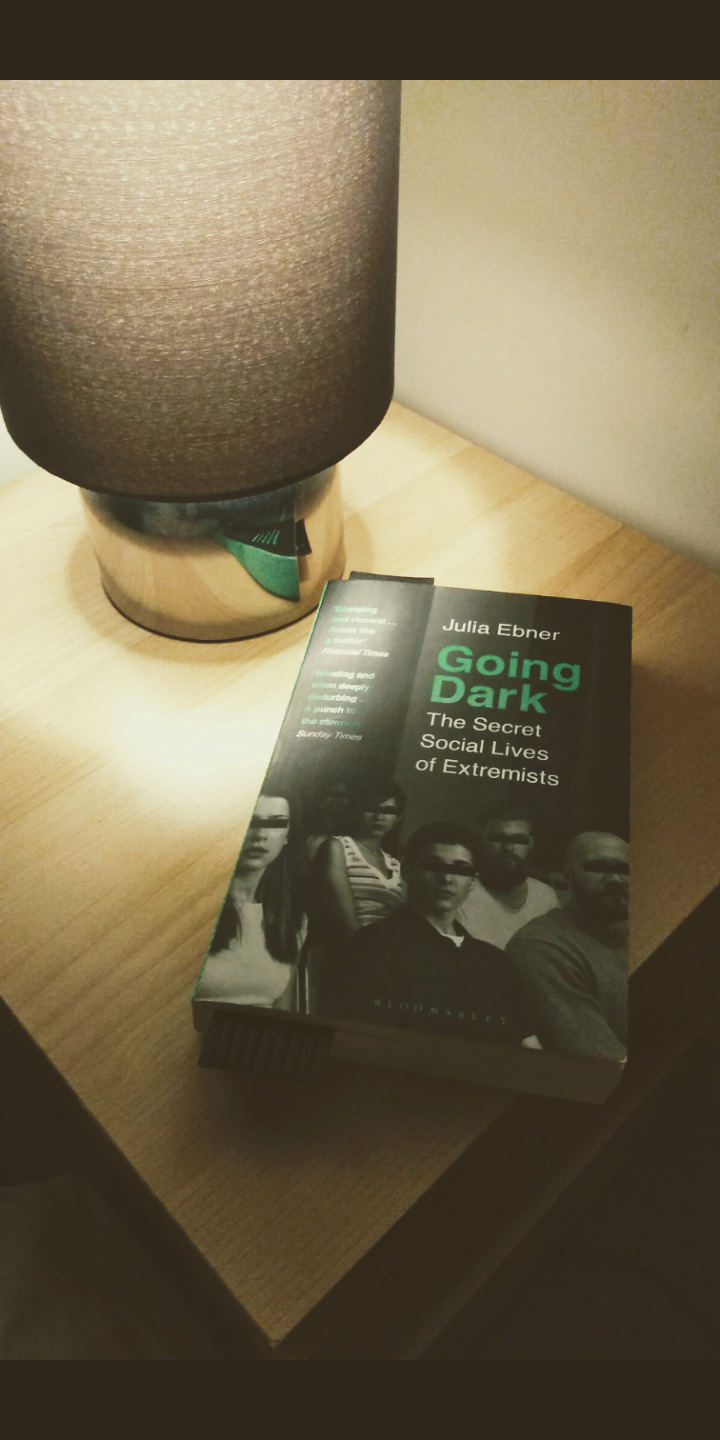
The other weekend when I was walking into town to run errands I spotted a swastika spray painted on the side of a store. It instantly made me uneasy. I came away with the same feeling when I finished reading ‘Going Dark’. The crudely drawn graffiti was a reminder that hidden within our communities are people who hold abhorrent and extremist views. The internet has offered a space for these people to communicate with like minded individuals and form networks encouraging these beliefs.
In this book Julina Ebner documents the groups she’s infiltrated and her experiences joining their conversations and activities. These include neo-fascists, trad wives subreddits and jihadists; demonstrating that even though these organisations hold drastically different views, the methods they use are incredibly similar. Ebner’s experiences show how online communication can inspire action to be taken for the sake of ideology.
The focus of ‘Going Dark’ is very much on the social aspect once people have joined rather than what motivates them. It covers how these groups correspond, what they talk about and the events they organise. Despite this narrow focus ‘Going Dark’ is still an important read, it fits into a much larger conversation about the gamification of terrorism and the part the internet plays in spreading and sustaining extermist views.
It is a stark warning that online personas have a way of bleeding into real life and often the consequence is violence.
1 note
·
View note
Text

The pandemic took a lot of people by surprise. I remember sitting in the office in early 2020 discussing over lunch the number of cases we were hearing about in Wuhan and the measures put in place there. We were all convinced it would not be anything serious and even a few weeks later when we were told to work from home we joked we’d see each other in a couple of months when it was all over. It has now been almost two years and in total, I’ve been in the office three days since March 2020.
‘The Premonition’ is about the people who saw this coming. It tells the story of the men and women who saw the patterns in the way viruses had a way of mutating and spreading, as had been the case during the 1918 Spanish flu pandemic. They studied the data, ran simulations and were out in the field dealing with very real cases of infectious diseases to understand what measures needed to be put in place to stop transmission.
In classic Michael Lewis fashion, the book deep dives into the lives of a few main protagonists in their fights for pandemic planning as a part of a complicated and convoluted system. The style of writing makes it easy to engage in discussions about public policy that have the risk of being a little dry and exposes the power struggles within governmental organisations. It is equal parts frustrating as it is fascinating in its exploration of the inefficiencies in the US healthcare system.
One question occurred to me after I finished reading ‘The Premonition’ - what's next? What is the next crisis around the corner that the majority of us are completely unaware of?
1 note
·
View note
Text

'Billion Dollar Whale' is a story about how sometimes "faking it till you make it" can work... if you have the right backers and systematic corruption on your side. The book opens by telling the tales of extravagant parties with celebrities and the mind boggling amounts of excess that centred around one ambitious Wharton grad.
If you are a fan of heist stories then ‘Billion Dollar Whale’ is the book for you. Tom Wright and Bradley Hope tell the complicated story of the 1MDB scandal and how Jho Low was able to swindle an estimated $4.5bn from a Malaysian sovereign wealth fund. Utilizing his connections with Prime Minister Najib Razak he began a self indulgent spending spree using funds that on paper were assigned for development within the country.
The extent of the theft and greed are fascinating and infuriating in equal parts. The book goes between talking about the billions spent on private shindigs at exclusive clubs and the complicated financial structures used to keep the scheme afloat. The people included in his orbit were from Hollywood, politics and investment banks. And, there were no questions asked by those surrounding Jho Low about where the money was coming from as long as they benefited.
The key takeaway from the ‘Billion Dollar Whale’ is that this is not purely a story about an individual, but rather the illustration of how an entire system can fail when profit is put above everything else.
1 note
·
View note
Text
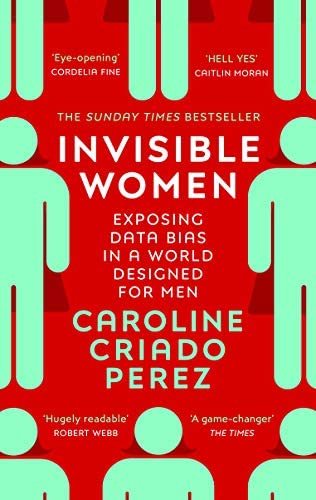
For most women the scenarios highlighted in this book will not be new information. You’re likely to have experienced a handful of them in the space of an average day if you drive a car, use public transport or work in an office building. The world is designed for and largely by the “average man” leaving anyone who doesn't fit into that category at a disadvantage. ‘Invisible Women’ demonstrates how this oversight plays out in reality at the detriment of over half of the population.
The book is divided into six parts covering daily life, work places, public spaces, design & technology and finally, disaster relief. Each section focuses on the gender data gaps that currently exist and the inequality resulting from this. It is an incredibly well researched book which provides a wealth of statistics to back up each of the points made. The key takeaway being the fact that the lack of sex disaggrgated data can lead to many hidden and some overt dangers for women.
‘Invisible Women’ reminds us that the consequences range from uncomfortable temperatures in office spaces to directly impacting women's health and safety. It is anger inducing to see the glaringly obvious bias entrenched in our society laid out in a succinct way in one place, however, this is an incredibly important read for anyone looking to understand gender inequality. (And, honestly everyone should be concerned about this issue.)
2 notes
·
View notes
Photo
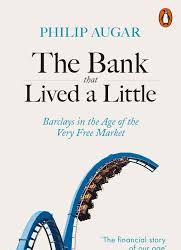
Philip Augar’s ‘The Bank that Lived a Little’ tells the story of the city over the past three decades through the arc of Barclays. It’s a tale of conflict, excess and crisis. How ambition and confidence turned the UK bank into a global force with its very own piece of Lehman Brothers. It is clear this is an incredibly well researched book through the detailed narrative. It holds as much intrigue as a novel; there are larger than life characters, boardroom drama and a crash of the financial system.
A thread that runs throughout the book is the internal conflict caused by pursuing an avenue into investment banking. After ‘Big Bang’ (deregulation of markets enacted in 1986) there was the opportunity for Barclays to put itself ahead of other UK banks and in the league of well-known Wall Street firms. It was by no means smooth sailing with hiccups and losses that had the likes of Martin Taylor questioning whether it was the right direction for the bank. The push and pull continued with the proponents for investment bank winning out as Bob Diamond led Barclays Capital.
As the bank accelerated in this part of the business - it is evident that there was a shift in the culture that moved it away from the ‘no jerks’ hiring rule. In order to compete and attract talent Wall Street style pay packages were offered. Despite bad press compensation had attracted and even the crash of 2008 did not slow Barclays down. Deciding to raise capital on its own terms gave it the confidence to continue to seek further expansion via acquisitions.
Although the story is largely focused on the investment arm, the example of Karl Edward’s experience with Barclays demonstrates how bad behaviour trickled through and infected the retail bank also. In the final chapters Augar covers the increasing number and frequency of scandals that have plagued Barclays such as PPE and Libor. The book is a warning for the future as much as a look at the years that have passed – the financial sector is unrecognisable in comparison to the pre-Big Bang institutions.
1 note
·
View note
Photo
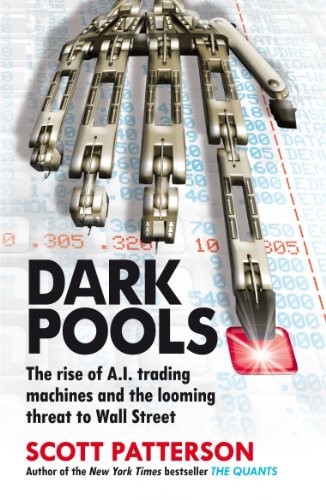
It’s almost impossible to ignore the impact of technology as the fear of automation looms over us. Office buildings are full of the hum of computers and fingers furiously typing away at key boards nine to five and beyond as work disappears into clouds and online spaces. The trading floor has been no different to other industries in this way; transforming from a testosterone filled hot bed of phone activity to decisions made by computer algorithms. In Dark Pool Scott Patterson explores the history of the electronic market and the people that drove the revolution forward.
Patterson’s book reads like a thriller telling the story of the AI take over through the lens of key players; it’s fast paced, well written and once I had started reading I did not want to stop. The main focus of the book is Josh Levine – the creator of the Island trading platform – who had sought to challenge the status quo of market makers and opaque practices. Levine was not the only one at the time pushing towards electronic trading; Gerald Putnam at Archipelago, Haim Bodek of Hull Trading are amongst the others not covered in as much detail in this book.
Despite the tagline the main focus is the evolution of high frequency trading rather than the exact risks it poses. The development culminated in the 2010 flash crash which demonstrated the very real fall out. Once spooked high frequency traders had the ability to disappear from the very market they had created leading to the chaos that ensued. Technology that had aimed to bolster stability had in fact become the root cause of volatility in the market as firms searched for the slightest profit margins via manipulative stock orders. The book ends with people who had once championed the progress of speaking out against it.
Dark Pool is in no way an expert’s guide which can be seen in some of the explanations of the use of AI versus machine learning. Alongside Flash Boys by Michael Lewis this book can provide an overview of high frequency trading for readers who may have an interest in understanding the market but not the background knowledge. The book starts and ends with a feeling of foreboding as for now all we can do for now is wait and see what the outcome is.
1 note
·
View note
Photo
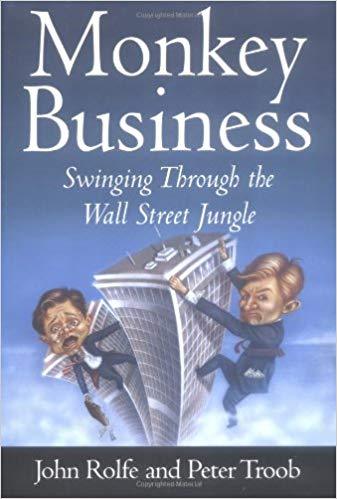
I am a big proponent of re-reading books; there is often something new you can pick up on the second (or third) reading. It can be a character quirk you hadn’t noticed, or foreshadowing you can only fully understand once you have seen the ending. In this case, it can still be as funny and entertaining as the first time you’ve read it. Monkey Business is the tale of two associates starting their careers in the investment banking sector and quickly coming to realise that it is not the dream they had been sold. (Not that they were entirely clear on what it was exactly.) They had expected hard work, dabauchary and most of all more money than they could have made anywhere else.
Monkey Business tells the tale of their excitement, acceptance and the epifanties that made them reconsider their chosen career path. The book is well paced, extremely funny and succinctly explains what investment banking actually entailed once they had received their coveted associate positions. Despite some aspects being dated, it hits on a lot of topics that are still very relevant for the young associate. There are stories that anyone in the corporate grind could sympathise with and ones about drunken antics that will make you cringe. And commiserates the toxicity of long working hours which is an issue for people in many different sectors.
With the introduction of modern technology - overworking is easier than ever. You can have your emails or excel spreadsheets in your back pocket at any time any place - dinner dates, family functions or beach holidays. Monkey Business talks openly about workplace burnout, which earlier this year has been recognised by the World Health Organisation as a phenomenon. It will be interesting to see if in another decade whether this book still rings as true as it does today, or if the millennial shift towards flexible working environments will change this.
#work#workplace#books#book review#literature#finance#peter troob#john rolfe#monkey business#bansi adroja
1 note
·
View note
Photo
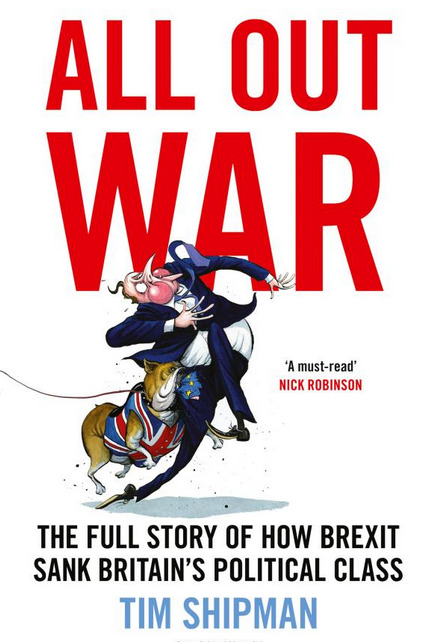
Following the EU Referendum I struggled to get my head around the result - I went into the office on June 24th 2016 sleep deprived and shell shocked. I had spoken to and interacted with many leave supporters before the vote - I talked about the economic risks and uncertainty only to be faced with a visceral, emotional response about the flaws of the EU publicized in the right wing press. (Possible Turkish accession, European Parliament moving between Brussels and Strasbourg, levels of immigration... the list goes on.) I felt flustered and exasperated but could not find a message with the right tone that cut through. In hindsight, on a much smaller scale I experienced the same frustrations felt by the ‘Stronger In’ campaign.
In ‘All Out War’ Tim Shipman lays out the story of the Brexit campaign from start to finish. The confident optimism on the remain side that they would be able to convince enough people to vote for the status quo and the in-fighting that almost took down ‘Vote Leave’. It paints a stark picture of a parliamentary party caught up in a losing battle to stay united unaware of public sentiment outside of their Southern strongholds. This book is a great, in-depth account of the “who’s who” involved and the key events leading up to 23 June 2016. Shipman is incredibly balanced in his assessments of why the UK voted to leave.
The Conservative Party was splitting over the issue of EU membership and the solution (a referendum) exposed a much deeper divide throughout the country. Two Conservatives in the end had given the Leave side an air of legitimacy and intellectual clout. In my opinion, Gove and Johnson’s role should not be underestimated when looking back at the campaign. ‘All Out War’ demonstrates perfectly the power of their involvement in convincing people that it would be ok to vote leave. It is hard not to be angry about the falsehoods and assumptions that have lead us to the position we are in currently.
Starting with one hand tied behind their back’s the remain side stuck so closely to their strategy they were blind sided by the strength of feeling and the motivation of voters. The economic argument they put forward alienated the public and shying away from tough issues such an immigration forcing ‘Stronger In’ to remain on the defensive. In conversation I found myself comparing EU membership to a service- you pay in for what you get out of it - the benefits of remaining were buried amongst the negativity on both sides. Sparking the ‘Project Fear’ label that ‘Stronger In’ could not shake.
The long term build up of eurosceptic sentiment cannot be ignored - the EU has repeatedly been used as a bargaining chip in British politics. It is almost impossible to pin point one root cause of the Brexit vote as it was so dependent on very particular sequence of events that occurred which had been in motion long before David Cameron pledged to hold a referendum on membership. ‘All Out War’ provides an invaluable narrative to anyone looking to fully grasp Brexit - it’s comprehensive, well written and fair in it’s assessments.
2 notes
·
View notes
Photo
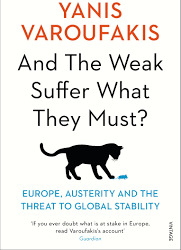
There are many potential starting points when looking at the European debt crisis and even more diverging explanations for the best route out. And The Weak Suffer What They Must? is essential reading for anyone looking to understand the fallout of the 2008 economic collapse on Europe. Varoufakis begins the story following the Second World War and provides the broader historical context for the monetary system currently in place (and its flaws).
It is hard to read this book now without thinking about Brexit and the wave of the populism that has spread throughout Europe in recent years. The book pin points and carefully explains the anger felt in debtor nations. It shines a light on the integral weakness in the European Union which has been aggravated by a type of finical crisis that was never expected to occur. And also highlights the opportunities that were available to the EU to correct course; opportunities that were not taken due to power dynamics and allegiances.
As can be expected this is not a neutral or detached history of the events that have taken place but nonetheless it is an important perspective on the Eurozone debt crisis and the policy decisions that have shaped the continent. A core focus of the Varoufakis’s argument is that austerity is not the solution when the fundamental system is flawed. He argues that European monetary integration has been built on assumptions and “fair-weather trading” with an intrinsic disadvantage for nations like Greece and Ireland for example.
The book is lively, very readable and provides an invaluable insight into the various mechanisms by which the bailouts were created and designed. Now as Britain prepares to leave the European Union and Greece’s emerges on the other side of the bailout it’s even more relevant in understanding the complex ties across the continent.
#book review#literature#politics#europe#yanis varoufakis#greece#debt crisis#economics#euro zone#eu#bansi adroja#and the weak suffer what they must?#books#Book Recommendations#nonfiction
1 note
·
View note
Photo

Amongst the chaos of accusations and denials there is one question that resounds in the matter of collusion between Russia and Trump - what actually happened?
Like many people following the headlines and attempting to understand the stories circulating I have found myself increasingly baffled. The waves of information appearing about various members of the Trump team and their ties with Moscow paint a murky picture of inadvertent (and some less so) connections and deals. In ‘Collusion’ Luke Harding provides background to the key players involved and recaps the information available at the time of publication. The book follows the political, personal and monetary links that have been discovered and it is clear that there are enough questions raised to cause concern. There is no clear light bulb moment that will draw the investigation to a close but all indications suggest that it is only a matter of time.
In the initial chapter’s of ‘Collusion’ Harding introduces the early probes into connections between Trump and Russia. This includes the findings shared as a part of the ‘Steele Dossier’ which have become common place in the conversion since Buzzfeed’s publication. Harding also sets out the context in which the connections between were established - the lure of potential business opportunities & sordid material. Throughout the book Harding’s personal experiences add colour to the world he has been investigating and writing about. The proceeding chapters focus on the main characters - this includes Carter Page, Paul Manafort & George Papadopoulos amongst others.
In addition to the above the book also covers the use of hacking & social media and the issue of “fake news”. It is surreal reading about recent changes in political tactics as we still assessing the impact they have had. It feels almost inevitable that 2016 will be considered a turning point in political campaigning. Harding emphasizes the gravity of the situation however focuses on the facts. In the end it will be the pieces of evidence that will shed light on the deals that were made between the president of the United States and a foreign entity. We have no closure and this leaves a strange aftertaste when the reading the final word of the book.
‘Collusion’ is an invaluable source for those interested in understanding the connections between Trump and Russia; it is lively, well paced and provides great detail. It cuts through the noise, the essential information and a guide for the stories to watch out for as the saga continues.
1 note
·
View note
Photo

2016 left globalists bewildered, confused and looking for answers. The rise of nationalism across Europe, the Brexit vote and the results of the US election signaled the beginning of a new style of politics. Clinton’s ‘What Happened’ gives a personal account of being on the front line of shifting public sentiment. The book touches on many of the issues that have framed recent politics from changing economic outlooks and the influence of social media.
‘What Happened’ is the story of a prepared, experienced candidate with expectations of winning caught off guard. She faced an opponent who lacked the same credentials and had looming sexual assault allegations which made the defeat even more painful. In her own words, this book was cathartic and provided space to process the loss of the election. It is unlikely that anyone reading this would expect a completely balanced account, and there is some clear score settling in the chapters about the media coverage of her use of a personal email server and the former FBI Director James Comey’s intervention late in the race.
Clinton frames her campaign persona as the adult in the room - she focused on being sensible while Trump proposed unrealistic plans and enticed hate. There is confusion about why policy discussions barely left a dent while wall to wall coverage of scandals rolled on a loop. This speaks to the dramatically different landscape in which modern political campaigns are fought. Impact of new technology has dramatically changed the way in which news is consumed and despite taking on board the failures of the 2012 campaign this was not anticipated.
The book attempts to identify the source of rising populism in the United States and the impact this had on the results of the election. Clinton addresses the criticism she received for not campaigning hard enough or showing solidarity with those left catching up with the competitive and global market. Despite this, it is clear that more needs to be done to appeal to these voters as pushing policy and discussing jobs had not worked. This is an issue the party will have to grapple with to be stronger in the future and is not sufficiently addressed in this book.
The tone of the ‘What Happened’ is understandably mixed, there is a significant amount of frustration, however, there is also heart warming core message throughout - this is not the end. Clinton shares stories of the women she met along the campaign trail and the inspiring letters she received handing the baton to the next generation of political activists. Amongst the mourning there will always be hope for the future.
#book review#books#politics#literature#book recommendations#2016 election#hillary clinton#what happened
11 notes
·
View notes
Photo

3/5
‘When to Rob a Bank’ collates a decade worth of ideas, economic thought and debate since the launch of the Freakonomics Blog. The book covers a lot of the topics you can think of and a lot more of that you have never considered. As always Dubner and Levitt’s unique way of looking at the world is engaging and their writing style keeps the book lively.
This book is for people who are looking for a quick read packed with ideas and overviews. Unlike the full length studies that make up other books in the Freakonomics franchise – ‘When to Rob a Bank’ doesn’t get into supporting evidence in the same depth. In addition, rather than full length chapters, the articles included are pulled together in vague categories that where not all links are clear.
For anyone who hasn’t read anything in the Freakonomics series so far, I wouldn’t recommend starting with ‘When to Rob a Bank’. But overall this is an enjoyable read for people who are interesting in the idiosyncrasies we face in our everyday lives. It’s easy to pick up and put back down for busy people who have sporadic amount of time to read.
1 note
·
View note
Photo
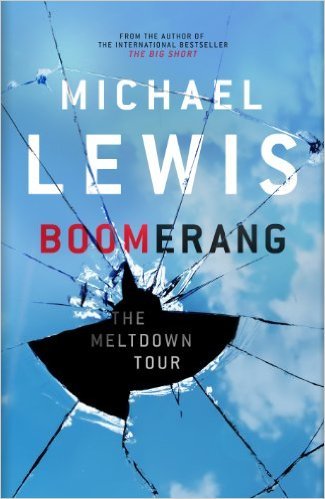
4/5
What would you do in a dark room with a pile of money?
This is the question Michael Lewis asks of European nations in Boomerang. Following the 2008 financial crash and the sovereign debt crisis this book explores some of the worst hit the economies; Iceland, Greece and Ireland. Lewis has a unique way of making hard to comprehend topics not only easy to understand but also interesting – there are few other authors who could write about the Icelandic finical system in the way he does.
So, what exactly happened? What did these countries do when significant amounts of cheap credit was available?
Iceland’s economy was rapidly transformed from one that was driven by exports to a hub of international finance. With foreign currency Icelandic bankers decided it was time to go shopping; they bought questionable assets while promising high returns to investors. It was a bubble that would inevitably burst. And when it did the country’s largest banks collapsed and as did its currency.
Ireland followed a similar pattern of growth – but it was a housing bubble that became the downfall in this case. Significant amounts of money were put into property development across the country. It was believed that this new expansion would turn its newly built villages into dream destinations. However, as enthusiasm declined and the economic reality set in, these new houses were to be abandoned becoming vast ghost towns.
Greece is the expectation. As Lewis states, instead of a country that was brought down by its banks, it was the country that ensured its own finical disaster. In this chapter a corrupt state is explored – from tax collectors being removed from front line positions for being good at their jobs to a scandal of monks collecting valuable real estate. The Greek collapse is minefield of unknown figures of spending and losses.
Boomerang looks at a small snapshots of the bigger picture, providing context for the headlines we are still hearing about today. It is entertaining, well written and informative like all of Michael Lewis’s writing.
3 notes
·
View notes
Photo
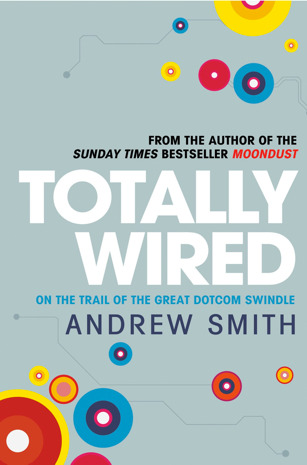
4/5
The late 1990s were host to a unique phenomenon that infected the stock market and reached fever pitch before a dramatic collapse. The dot-com bubble saw a wave of the first websites that were soon to be abandoned. The bubble brust when the line between reality and fantasy blurred.
‘Totally Wired’ tells of stock market speculation, the parties the dot-com billionaires hosted, the companies and the offices that set off the boom. Andrew Smith explores this event with the story of Josh Harris - the elusive early dot com entrepreneurs.
Harris disappeared following the 2000 crash of the boom - Smith tracked him down in Ethiopia unsure of what to expect from their interactions. With vague messages and odd requests it was not entirely clear where the journey would lead.
Harris founded Pseudo and sought to change the way the world viewed entertainment. He broadcast his life to the world letting them watch everything from eating breakfast to sleeping. His story is telling of the dot-com bubble that had taken over the markets.
Smith tells the story of this perplexing event in an engaging and charming way delving into the forgotten characters and discarded websites. ‘Totally Wired’ is a dizzying, funny and entertaining read.
1 note
·
View note